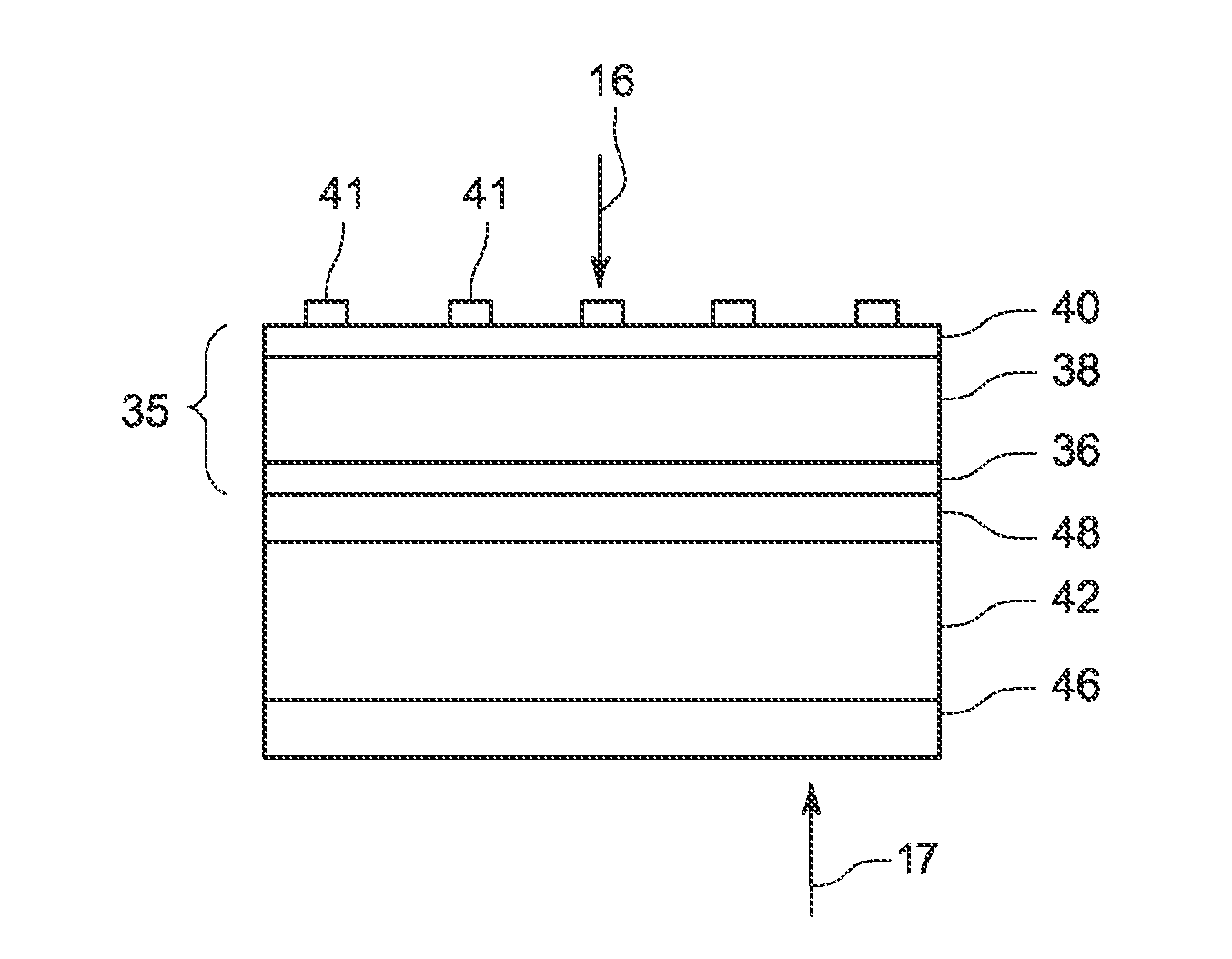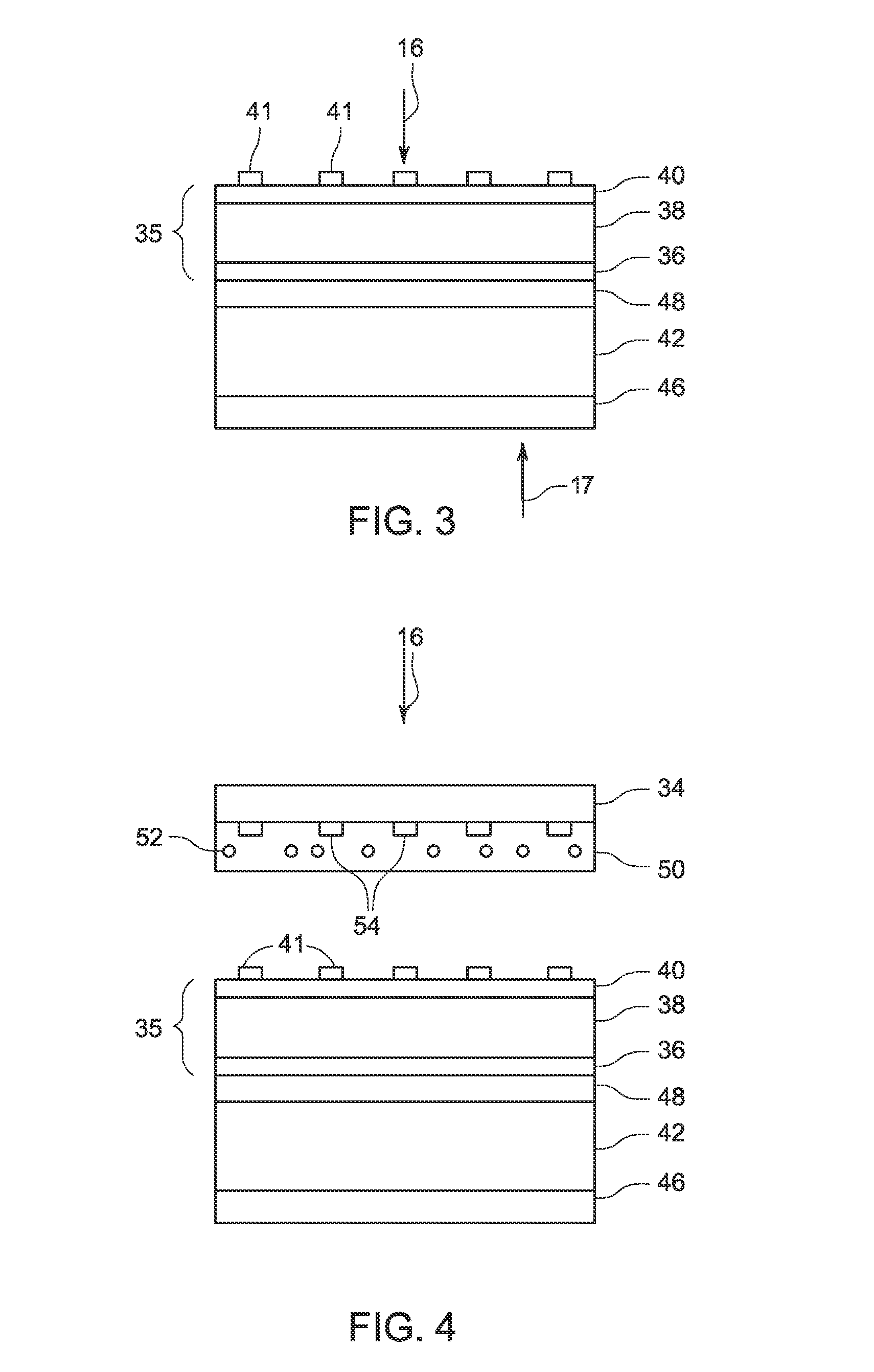Photodetector having improved quantum efficiency
a photodetector and quantum efficiency technology, applied in the field of xray based imaging systems, can solve the problems of reducing the quantum efficiency of the photodetector, reducing the quantum efficiency of the detector by approximately 20%,
- Summary
- Abstract
- Description
- Claims
- Application Information
AI Technical Summary
Benefits of technology
Problems solved by technology
Method used
Image
Examples
Embodiment Construction
[0014]Embodiments of the present disclosure involve a radiation detector and imaging system having an X-ray source which emits radiation towards a subject or object, or anything capable of being imaged. The X-ray beams, after being attenuated by the subject or object, impinge a photodetector which produces a signal indicative of the amount of X-ray radiation at the particular location of the element. The signals are collected, digitized and transmitted to a data processing system for analysis and further processing to produce an image.
[0015]FIG. 1 depicts one embodiment of a radiation detector system 10 for use in an imaging system. While the system 10 is explained in the context of X-ray detection, in some embodiments, the system 10 may be adapted to detect other forms of electromagnetic signals (e.g., visible light). In the depicted embodiment, the radiation detector system 10 includes a photodetector module 12 and a control and processing circuitry 14. During imaging, incoming ra...
PUM
 Login to View More
Login to View More Abstract
Description
Claims
Application Information
 Login to View More
Login to View More - R&D
- Intellectual Property
- Life Sciences
- Materials
- Tech Scout
- Unparalleled Data Quality
- Higher Quality Content
- 60% Fewer Hallucinations
Browse by: Latest US Patents, China's latest patents, Technical Efficacy Thesaurus, Application Domain, Technology Topic, Popular Technical Reports.
© 2025 PatSnap. All rights reserved.Legal|Privacy policy|Modern Slavery Act Transparency Statement|Sitemap|About US| Contact US: help@patsnap.com



